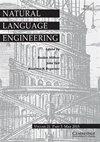新兴趋势:能说会道的机器
IF 1.9
3区 计算机科学
Q3 COMPUTER SCIENCE, ARTIFICIAL INTELLIGENCE
引用次数: 0
摘要
大型语言模型(llm)已经取得了惊人的成功。他们在医学和法律的标准化考试中成绩优异。话虽如此,但门槛已经提高得如此之高,以至于可能需要几十年的时间才能实现预期。为了为这个长期的研究项目争取时间,该领域需要确定一些好的短期应用,让会说话的机器更流利,而不是更值得信赖。本文章由计算机程序翻译,如有差异,请以英文原文为准。
Emerging trends: Smooth-talking machines
Abstract Large language models (LLMs) have achieved amazing successes. They have done well on standardized tests in medicine and the law. That said, the bar has been raised so high that it could take decades to make good on expectations. To buy time for this long-term research program, the field needs to identify some good short-term applications for smooth-talking machines that are more fluent than trustworthy.
求助全文
通过发布文献求助,成功后即可免费获取论文全文。
去求助
来源期刊

Natural Language Engineering
COMPUTER SCIENCE, ARTIFICIAL INTELLIGENCE-
CiteScore
5.90
自引率
12.00%
发文量
60
审稿时长
>12 weeks
期刊介绍:
Natural Language Engineering meets the needs of professionals and researchers working in all areas of computerised language processing, whether from the perspective of theoretical or descriptive linguistics, lexicology, computer science or engineering. Its aim is to bridge the gap between traditional computational linguistics research and the implementation of practical applications with potential real-world use. As well as publishing research articles on a broad range of topics - from text analysis, machine translation, information retrieval and speech analysis and generation to integrated systems and multi modal interfaces - it also publishes special issues on specific areas and technologies within these topics, an industry watch column and book reviews.
 求助内容:
求助内容: 应助结果提醒方式:
应助结果提醒方式:


